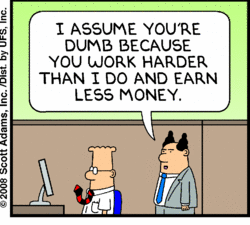
I have been a new father and a nonprofit director simultaneously, and this combination is a terrible experiment that no one should try at home. Sleep has been as elusive as general operating funds. This is why when I carry the baby down the street, passersby often remark, “Aw, what a beautiful grandson you have.”
Still, the baby is magical. I have been flexing my hours so I could spend every Friday with him. First, because life is short, and I don’t want to wish later that I had spent more time with my son. And second, because I am training him to be a nonprofit warrior, passing down the wisdom I have gained so that he could eventually take over for me. “Learn your ABC’s, son,” I would say, “so that one day you may fight injustice through grantwriting.”
Continue reading “10 Lessons about nonprofit work I’ve learned from my toddler”



